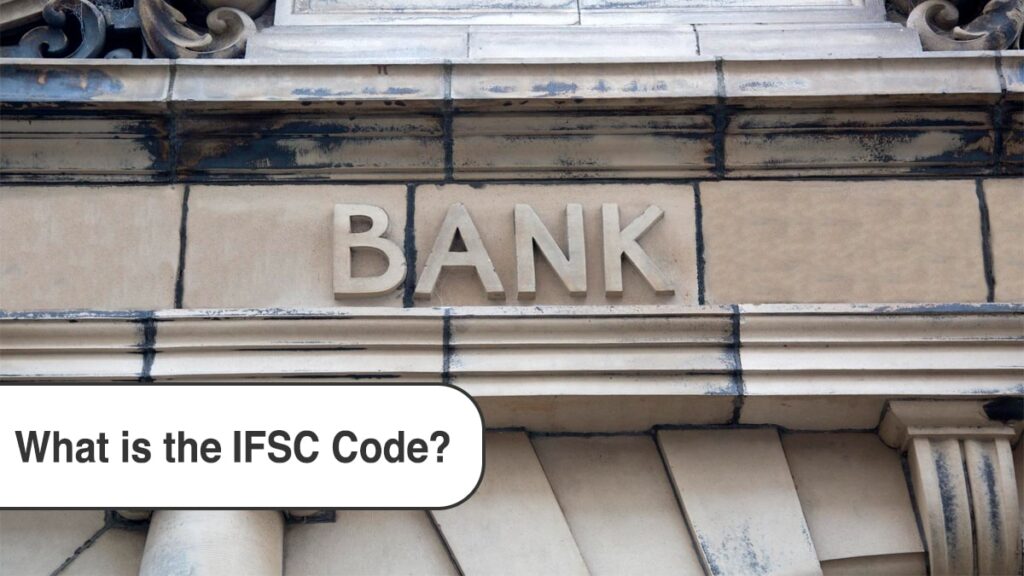IFSC Code is a very important code that is used for doing financial transactions using banks. It is an alphanumeric code that plays a crucial role in the smooth and accurate transfer of funds.
IFSC Code stands for Indian Financial System Code, which is a unique code assigned to every bank branch in India. It is a key component of the National Electronic Funds Transfer (NEFT), Real-Time Gross Settlement (RTGS), and Immediate Payment Service (IMPS) systems.
In this article, we will discuss what is IFSC Code, The Importance of the IFSC Code, why is an IFSC Code Required, How Does IFSC Code Work, Example of the IFSC code, etc.

Indian Financial System Code (IFSC) Format
IFSC Code is an 11-digit alphanumeric code that is used for transacting funds from one account to another. You can dissect the IFSC Code into three part, which is as follows-
First Four Characters (Alphabetic)
The initial four characters of the IFSC Code represent the name of the bank. These alphabetic characters are usually taken from the bank’s name or acronym.
Fifth Character (Zero)
The fifth character of the IFSC Code is fixed and is set to ‘0’. This digit is reserved for future use and is currently not utilized.
Last Six Characters (Numeric)
The final six characters of the IFSC Code denote the specific branch of the bank. These numeric characters uniquely identify the individual branch and are assigned by the Reserve Bank of India (RBI).
For example
The IFSC Code for the State Bank of India’s Cabinet Secretariat branch in Delhi is SBIN0064024-
- Here SBIN stands for State Bank of India
- ‘0’ is added for future branch addition
- Followed by 064024, which is the six-character branch code
The Importance of the IFSC Code
The banking system depends on the IFSC Code for transferring funds electronically. Here are key aspects that underscore the significance of the IFSC Code:
- IFSC Code acts as a unique 11-digit alphanumeric number that can be used for identifying the bank branch, and bank name using the code
- It is crucial for transacting money from one account to another whether you are doing, NEFT, RTGS, or IMPS.
- You can also use the Bank IFSC Code and Account number to transfer funds using the UPI
- The IFSC Code facilitates seamless communication and transactions between various banks and their branches.
- By incorporating a standardized alphanumeric code, the IFSC system enhances the security of electronic transactions. It minimizes the risk of fraudulent activities by providing a structured and unique identifier for each bank branch.
How Does the IFSC Code Work?
The IFSC Code uses an optimized method of mechanism that delivers a fast and secure fund transfer process within the Indian banking System. Here’s a step-by-step breakdown of how the IFSC Code works:
- When an individual or entity initiates the fund transfer process through NEFT, RTGS, and IMPS. After initiation by them, the process of the IFSC begins.
- The very first step is to find the bank where the IFSC Code is from. The first four letters of the IFSC Code determine the bank name like “SBIN” for State Bank of India
- The 6th digit is for future reservation should the branch of the bank goes up then the respective number will be granted to them
- After finding the bank name, using the last 6 digits number, the bank branch will be located followed by locating the account number of the receiver
- Now, the funds will be transferred from the sender’s bank to the receiver’s bank and a reverse confirmation loop will be initiated to check the correct completion of the process
How to Find the IFSC Code?
IFSC Code is important to mention when you are sending the funds from your account to others or when you are sharing the account details with the sender. The following are the steps that you’ll have to follow to find the IFSC Code-
Using AskBankIFSC Code IFSC Code Finder Tool
- Visit the AskBankIFSC website and there you’ll find the IFSC Code Finder tool
- You can use the tool by selecting the bank name, state, district, and branch details of your bank
- The tool will display the corresponding IFSC Code of your bank branch, you can copy the code and use it
Using Cheque
- Look for a series of numbers and alphabets at the top or bottom of the cheque, the IFSC Code is typically near the bank’s name and address or close to the MICR code.
Using Mobile Banking
- Log in to your mobile banking app using your login credentials
- After logging in, navigate to the section that displays your account details or your account details dashboard
- There you’ll find the option to view the IFSC Code associated with your account or search for the IFSC Code of a specific branch
FAQ
The full form of the IFSC Code is the Indian Financial System Code.
Yes, the IFSC Code is unique to each bank branch. It helps identify the specific branch involved in a transaction, ensuring accuracy in fund transfers.
The IFSC Code is an 11-character code. The first four characters represent the bank, the fifth character is ‘0’ (zero) used for the future, and the last six characters identify the specific branch.
No, the IFSC Code is a mandatory requirement for electronic fund transfers in India. It ensures that funds are directed to the correct bank branch.
Using the wrong IFSC Code can result in the misrouting of funds. It is crucial to double-check and use the correct IFSC Code to avoid delays or errors in electronic fund transfers.



